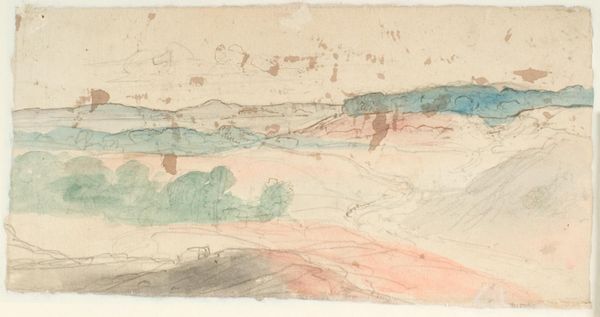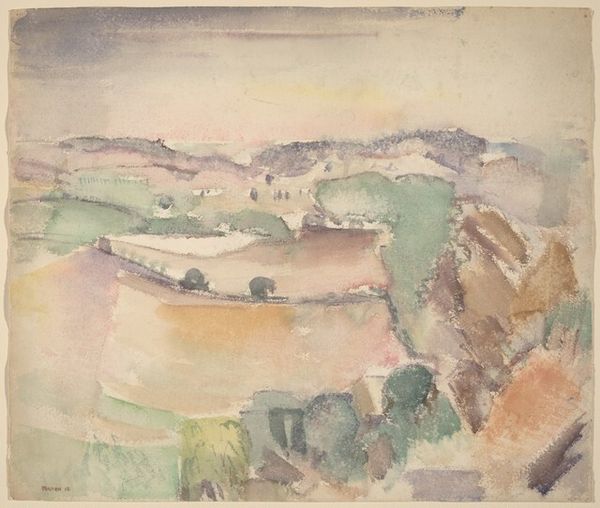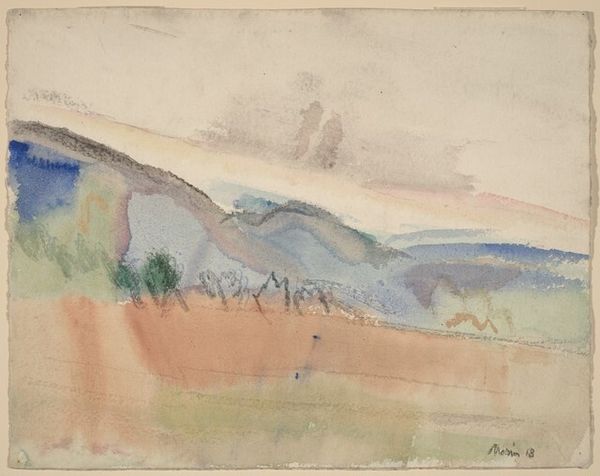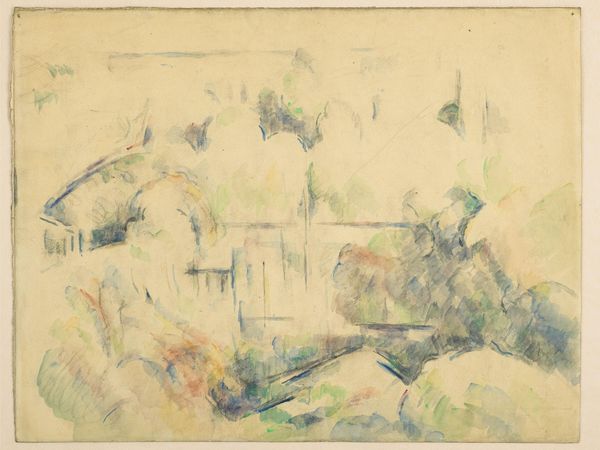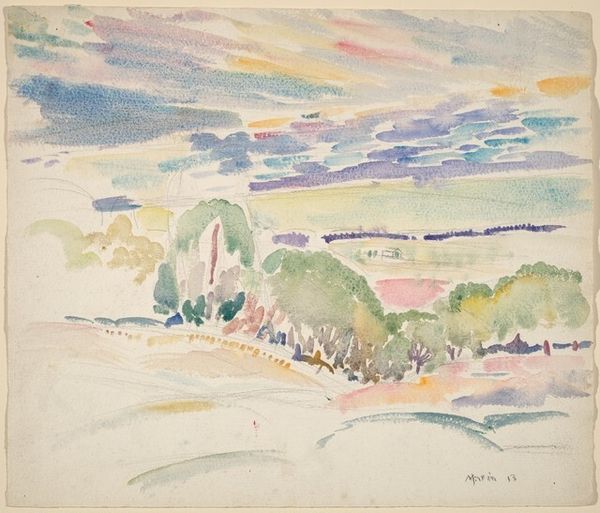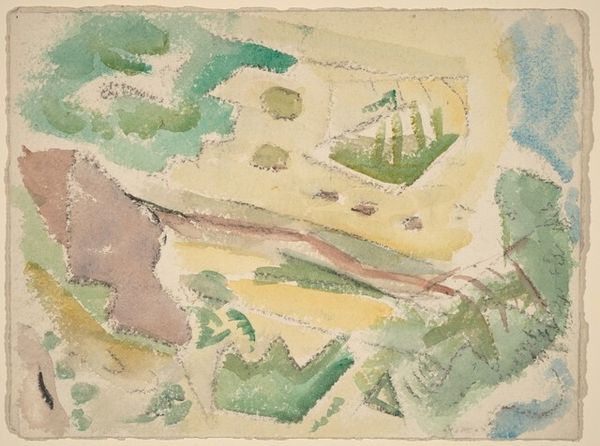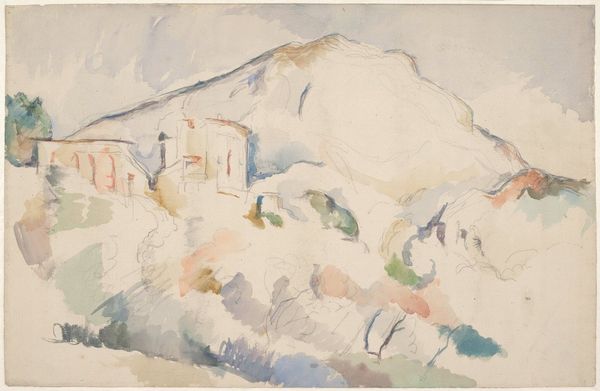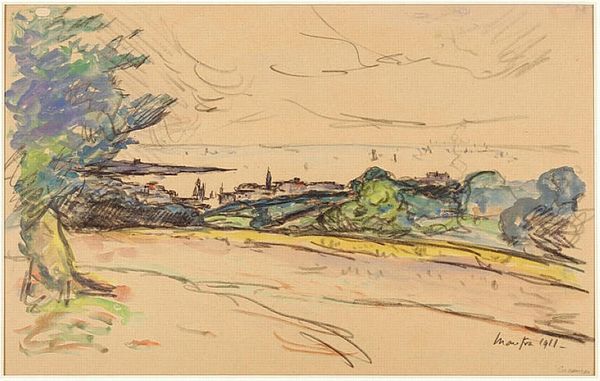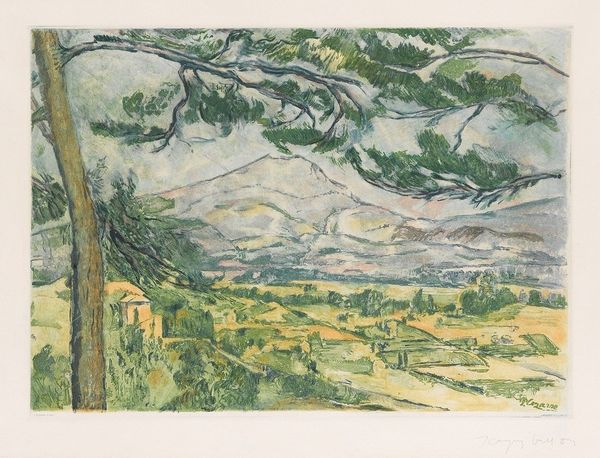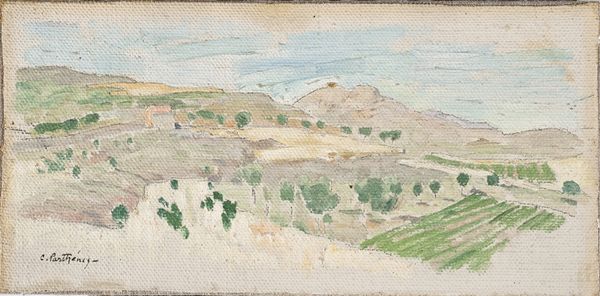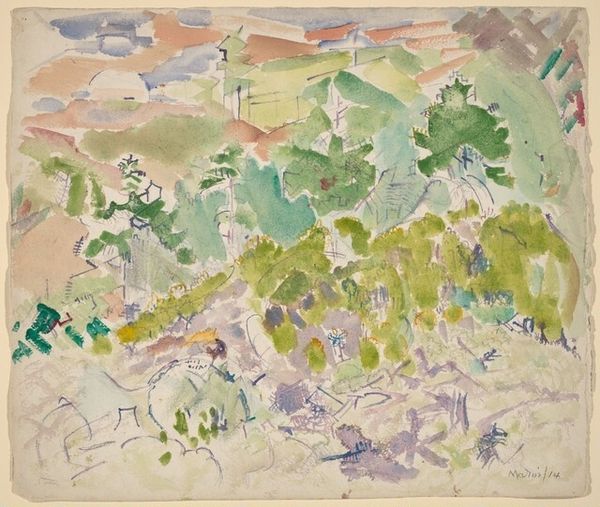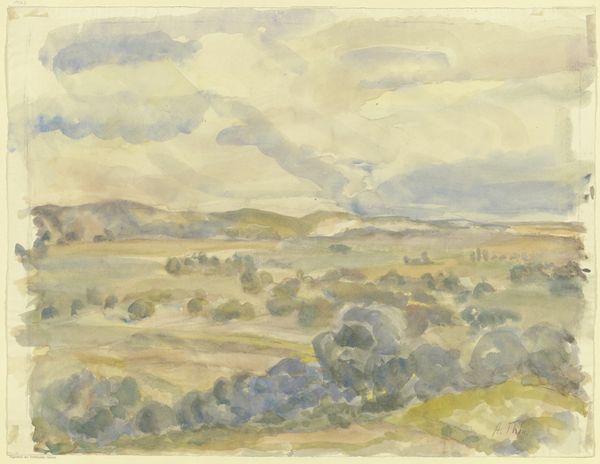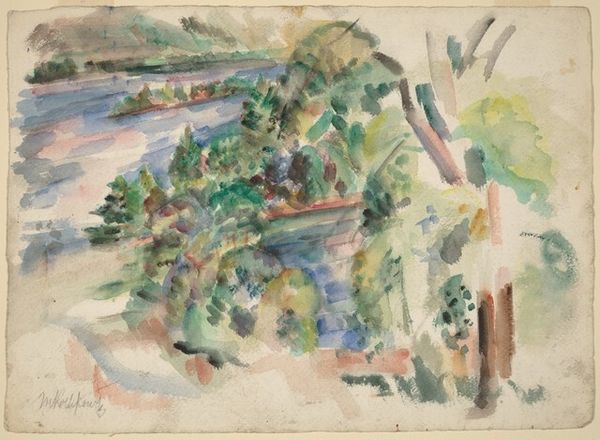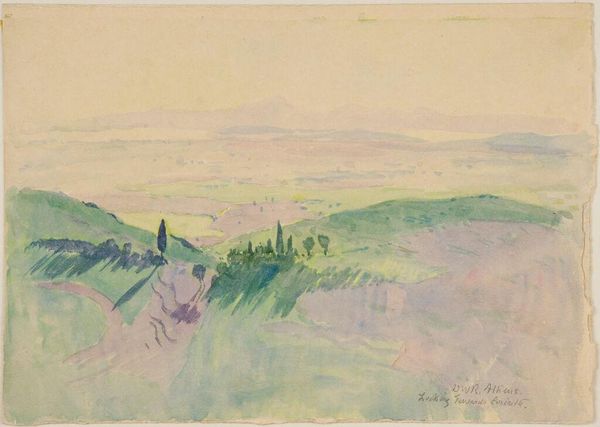
watercolor
#
impressionism
#
landscape
#
watercolor
#
post-impressionism
Copyright: Public Domain: Artvee
Curator: Gazing at this watercolor by Paul Cézanne, dating from around 1885, you're immediately struck by the hazy, almost ethereal quality of the Montagne Saint-Victoire. Editor: Yes, it's as if the landscape is breathing. The colors are so subdued, so subtly layered, it almost feels incomplete, like a half-remembered dream. The prominent, stark tree on the left of the frame creates a jarring effect with the tranquil horizon, however. Curator: Exactly. It’s far from photorealistic, yet somehow it captures the very essence of the place. Cézanne's technique here is really intriguing. We know that Cézanne revisited this scene of Saint-Victoire multiple times and it reveals a lot about his own working class lifestyle as well. Editor: That’s precisely it. Consider how watercolor, traditionally deemed a medium for sketches or 'feminine' art, is employed to depict something as monumental as a mountain. And the evident process: we can practically see the pencil lines beneath, the bare paper peeking through the washes. It all highlights the labor and materials, not to idealize nature, but to confront the conditions of its representation. I wonder where he sourced his pigment and paper at this time and place. Curator: I think you're on to something; those exposed pencil lines, in many ways, allow you to see the artist’s creative decision-making and add something intimate and inviting to this otherwise imposing scene. It isn’t so much a polished representation but a record of a process. Editor: Yes, it seems like he's dismantling conventional landscape painting piece by piece. Highlighting the handmade nature of artistic creation against the grandeur and perceived immutability of nature. He seems very self-conscious of the act of representing a cultural icon such as Saint-Victoire. Curator: Well, whatever he was doing, there's something deeply moving about seeing this familiar landscape through such a personal lens. It really asks us to pause, reflect, and ask questions. Editor: Indeed. It leaves one to ponder how much art really reflects or is formed by cultural expectations, our methods of creating and viewing that ultimately alter the cultural view of a subject like Mont Sainte-Victoire.
Comments
No comments
Be the first to comment and join the conversation on the ultimate creative platform.
